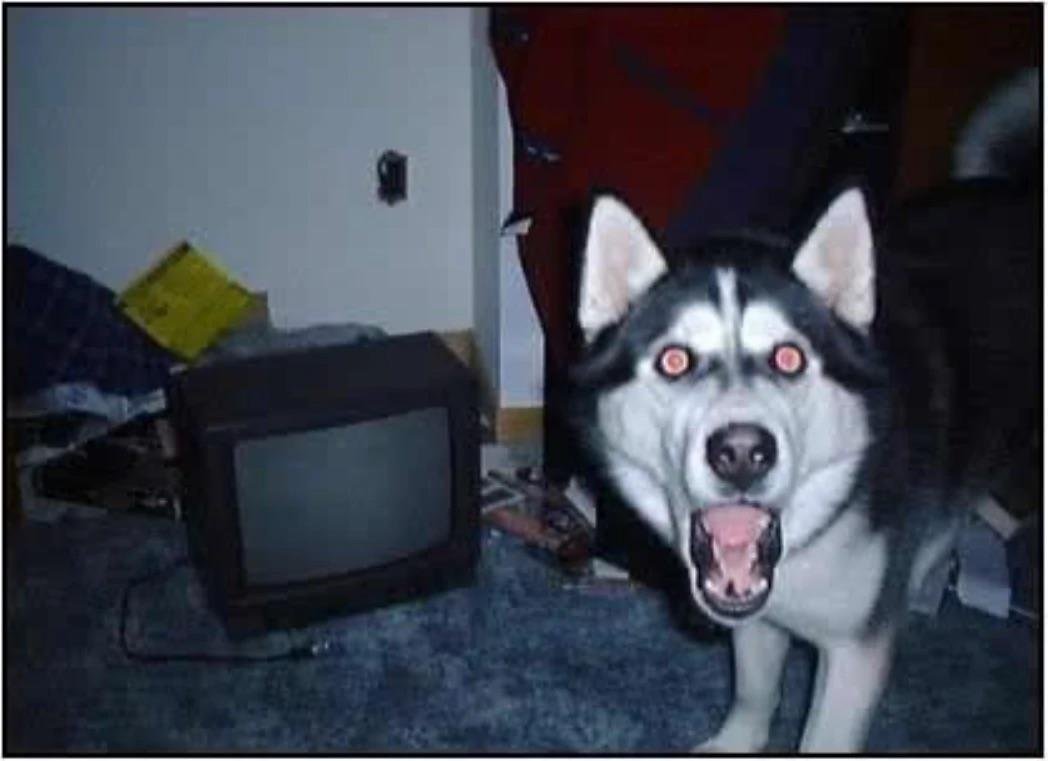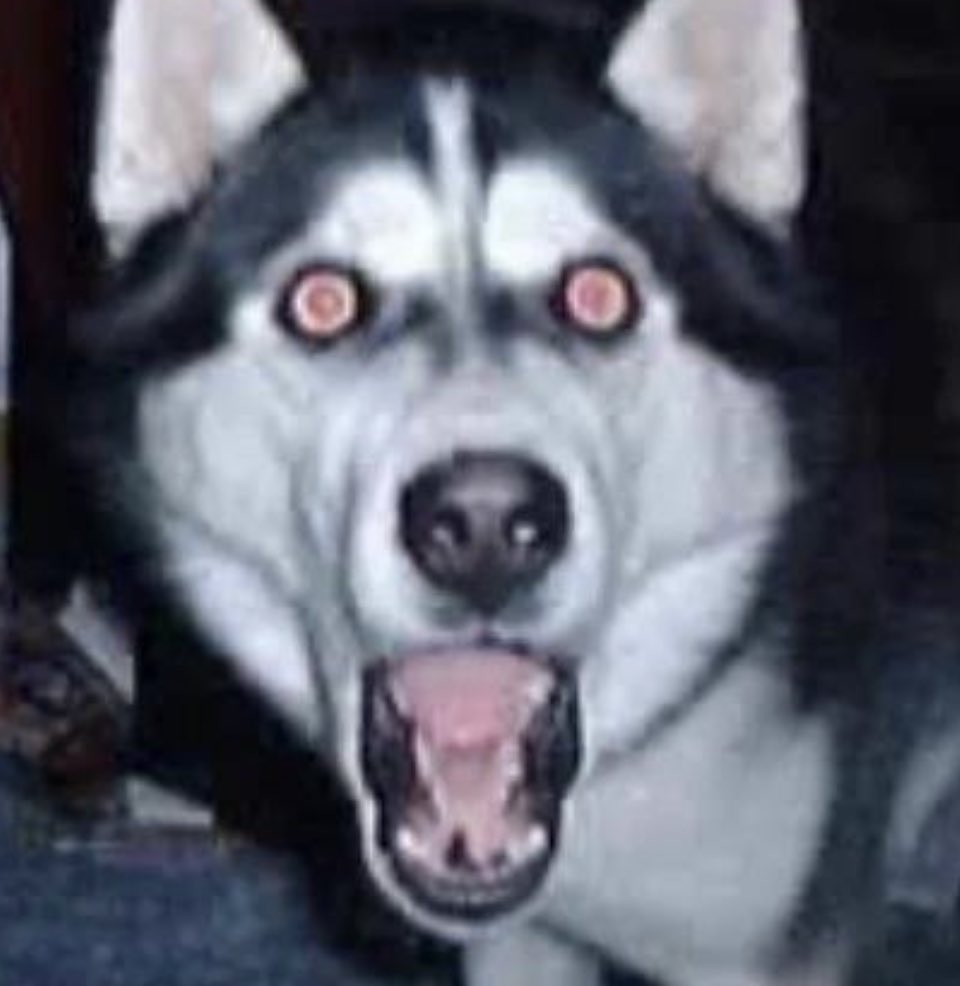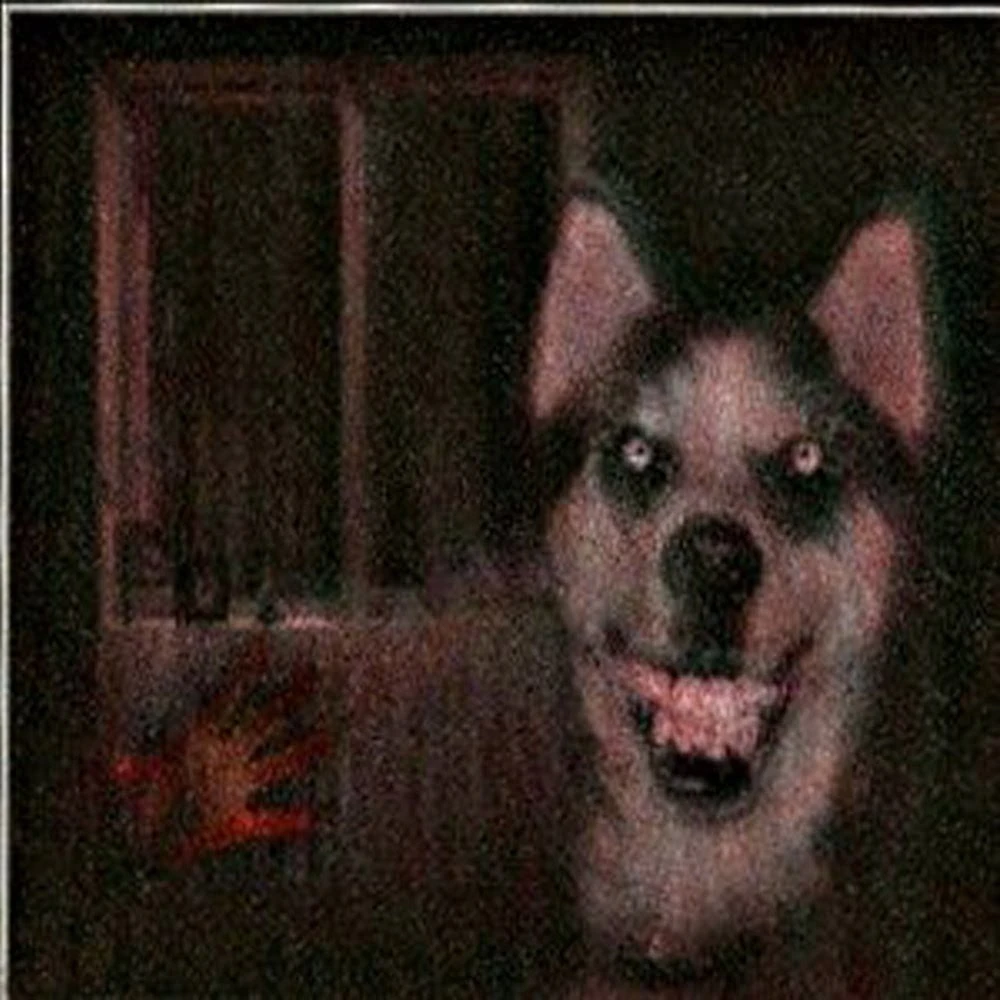Unmasking The Smile.dog Creepypasta: Origins & Mystery
Have you ever stumbled upon an image that seemed to burrow its way into your mind, leaving a lingering unease? The internet, a vast repository of information and imagery, is also home to unsettling tales, and one such story revolves around "Smile.dog," a creepypasta that has haunted online forums for years.
The genesis of "Smile.dog" can be traced back to the early days of online creepypastas, approximately 2006 or 2007, when it first surfaced on 4chan's /x/ board. It centers around a disturbing photograph of a dog, a husky to be precise, with a disconcertingly wide, almost human-like smile. This image, allegedly accompanied by an email and a chilling narrative, has become a cornerstone of internet horror lore, eliciting a sense of dread in those who have encountered it. The original image, meant to accompany the creepypasta, has proven elusive, and the reproductions that circulate only add to the mystery.
The tale, as it often goes, began with an email. The message, it is said, contained the image of the smiling dog and a request, a demand even, to "spread the word." Those who viewed the image were warned to share it, lest they suffer dire consequences. Those consequences, the story claimed, included nightmares, visions, and a descent into madness. The narrative spoke of victims, people who saw the image and were subsequently tormented by the entity, a supernatural force embodied by the dog itself, that called itself Smile.dog.
The creepypasta genre, with its roots in the anonymous online communities, relies on the power of suggestion and the unsettling nature of the unknown. The lack of concrete evidence, the ambiguous origins of the image, and the chilling tone of the story contribute to its enduring appeal. The story also tapped into a primal fear: the vulnerability of the mind and the potential for external forces to corrupt it.
The image, which became the heart of the creepypasta, is described as a red-tinted photograph of a husky, its features subtly distorted to enhance the uncanny effect. The unnaturally wide smile, the unsettling glint in the dog's eyes, and the supposed presence of a hand in the corner of the image amplified the sense of unease. This, in conjunction with the narrative, made "Smile.dog" a haunting presence in the internet's collective consciousness. The image itself is a composite, a product of digital manipulation. Various versions have circulated, each contributing to the overall ambiguity of the entity.
The story has a chilling core, describing how the image spreads through emails, and how the image is also said to cause the viewer to experience negative side effects. The goal of the entity seems to be forcing the viewer to spread the image to others. The creepypasta describes how, eventually, the image drives the viewer mad. There are versions of photos that have popped up in the past as well.
The story claims that it all started with the appearance of a photo. That photo was supposedly a photo of a dog with an unnatural smile. Its not the photo itself thats scary, but the stories the photo has generated and the reactions it has caused. The picture is said to cause nightmares, anxiety, and mental instability for those who see it, and the only way to stop the torment is to share the photo with others. The story even had a famous quote Spread the word.
The narrative around "Smile.dog" has its share of mysteries. The identity of the author, for example, has been subject to speculation. While some have attributed the story to Michael Lutz, the exact origins of the creepypasta remain shrouded in obscurity. The story is, in some ways, more effective because its origins are ambiguous, allowing the readers to fill in the gaps with their own interpretations and fears.
The creepypasta often features a photoshopped image of a Siberian Husky, displaying an eerie smile, with human teeth. This, combined with the text accompanying the image, created a unique online experience.
The image's association with potential harm is a key element of its unsettling nature. The belief that the photo could cause epileptic seizures, anxiety, and even insanity feeds into a deeper fear of the unknown and the potential power of the internet to affect our lives. The fact that the original image may never be found only adds to the air of mystery and the sense that there is something truly sinister at play.
The "Smile.dog" saga also highlights the spread of misinformation and urban legends within the online world. The fact that there are so many iterations of the original image, each designed to capitalize on the original tale, indicates its cultural reach.
Beyond the original story, "Smile.dog" has spawned numerous variations, fan fiction, and artwork, demonstrating its cultural impact. The characters and concepts have made their way into online games, art projects, and other forms of media.
The storys impact can be seen not only in online circles but also in the physical world. Mary was one of the most frequently cited victims, and the story is said to cause madness.
Many people who have looked at the picture have claimed they have seen a hand in the bottom left side of the picture as well. Another feature of the photos is that the window on the left side of the picture is also featured more in the left side than it is in the top picture.
The image itself also has some interesting interpretations. The eyes and the nose for the face and the nose of the original Husky and the white part around the nose also create a sinister effect, which in turn has been associated with the images ability to cause fear.
| The Smile.dog Phenomenon: At a Glance | |
|---|---|
| Type: | Creepypasta, Internet Urban Legend |
| Origin: | 4chan's /x/ board, circa 2006-2007 |
| Subject: | A disturbing image of a dog (likely a husky) with an unnatural smile |
| Premise: | Viewing the image supposedly causes psychological distress, nightmares, and a compulsion to spread the image |
| Key Features: | Uncanny imagery, unsettling narrative, potential for psychological impact |
| Known Side Effects (as reported): | Nightmares, visions, anxiety, insomnia, and in extreme cases, potential mental instability. |
| Spread: | Reported to spread via email, social media, and other online platforms. |
| Notable Elements: | The phrase "Spread the word" and the ambiguity surrounding the image's authenticity. |
| Related Concepts: | Uncanny Valley, the power of suggestion, internet folklore, psychological horror. |
| Cultural Impact: | Influence on internet culture, fan fiction, artwork, and related content. |
| Author: | The author is unknown. |
| Image Details: | Reddened photo, displaying an eerie smile, with human teeth, and also contains a hand in the bottom left corner. |
| The Quote: | "Spread the word" |
| Victim Name: | Mary |
| Reference Website: | Urban Dictionary |
In essence, "Smile.dog" is a reflection of our eras fascination with the eerie, the unknown, and the potential for technology to shape our reality. It remains a potent example of how a simple image, combined with a compelling narrative, can become a cultural phenomenon that continues to provoke curiosity, and indeed, fear, long after its initial appearance.


